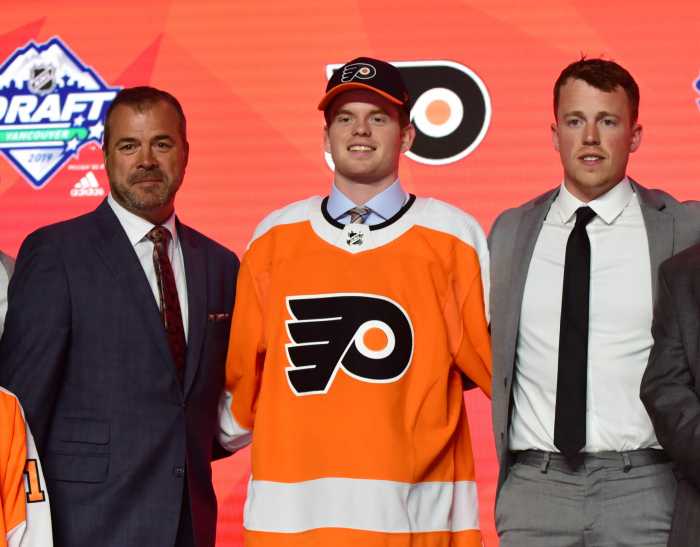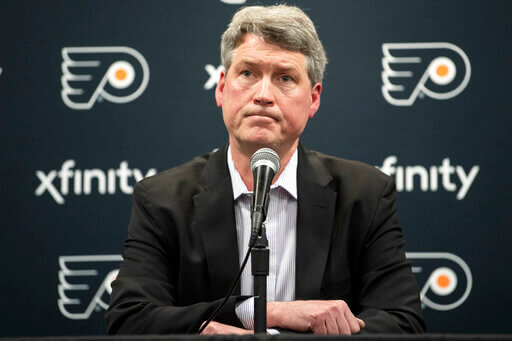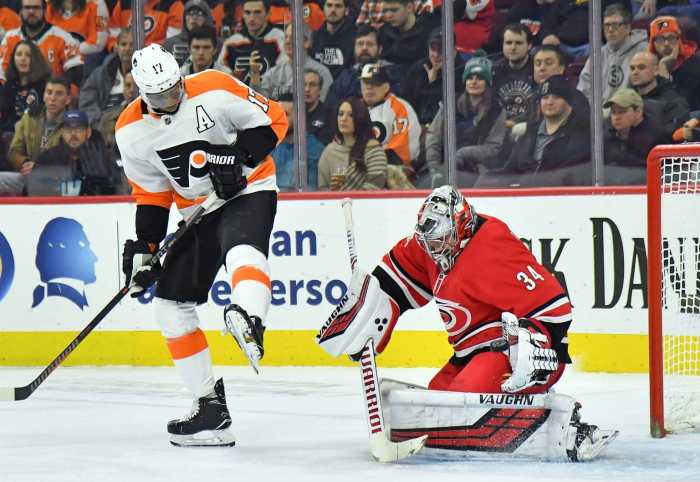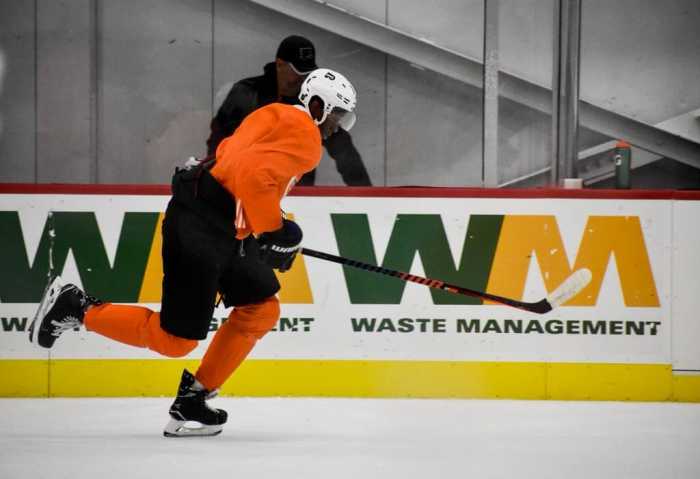It’s no secret that the penalty kill units for the Flyers were pretty horrid this past season. They finished 26th out of 31 NHL teams, sometimes flirting with the bottom of the league in that category. When you dig a little deeper, you see just how bad these units really performed.
The Flyers allowed 237 powerplay opportunities against last year. Opposing teams converted on 51 of those attempts. The league average was 47 conversions on 239 attempts. Those stats led to a penalty-killing efficiency rating of 78.48%. This is 1.74% less than the league average of 80.22%.
Even more eye-opening is that those 51 goals made up 18.21% of the total goals scored against the Flyers. Essentially, one out of every five goals came while they were a man short.
This offseason, Chuck Fletcher made a few moves along the blueline that should help bolster an otherwise putrid penalty kill. Matt Niskanen and Justin Braun bring a solid defensive mindedness to a defensive core that’s main focus has been offense and driving play up the ice.
With that being said, it’s time to take a look at the 2018-19 penalty kill stats and see what the lines may look like entering the 2019-20 campaign.
Penalty Kill Forwards
Amongst the Flyers forwards, two names stand out. Sean Couturier and Scott Laughton. Couturier led all Flyers forwards in penalty killing minutes with 184:51 total, averaging out to about 2:20 per game. Laughton was not far behind, playing 183:52 total on the kill, and averaging around 2:15 per night on the PK.
With the acquisition of Kevin Hayes, it opens the door for Couturier to take a breather on the PK. This helps save him for his top-line role. Hayes played 126:33 on the PK last year with the New York Rangers and Winnipeg Jets. He averaged just over 1:45 per night on the kill. This makes him a viable replacement for Couturier while being a man down.
Claude Giroux spent about the same amount of time on the penalty kill as Kevin Hayes. However, it may behoove head coach Alain Vigneault to keep his top liners fresh. The Flyers may lean on some other forwards. At this point considering how bad the penalty kill units were last year, what is there to lose?
Other forwards who could see a considerable role while being a man down could be Oskar Lindblom, Michael Raffl, and newcomer Tyler Pitlick. Lindblom played 62:58 on the PK last year, averaging out to around 47 seconds per night. Raffl who averaged about 55 seconds per night on the PK. Pitlick averaged nearly 50 seconds per night on the penalty kill last year for Dallas.
Penalty Kill Defense
The defense is a bit more set in stone considering the acquisitions made this offseason. With Chuck Fletcher bringing in Matt Niskanen and Justin Braun, he made it clear that bolstering the penalty kill unit was going to be a priority.
Amongst the current defensemen, Ivan Provorov averaged the most time on the PK last year. Additionally, he averaged more than any forward on the team as well. His 283:13 is most amongst any current Flyers, and he averaged slightly under 3:30 per night on the PK.
Provorov figures to be slotted next to Niskanen while shorthanded. Niskanen logged 220:40 minutes on the PK last year. He averaged right around 2:45 per night while playing with the Washington Capitals. Provorov and Niskanen could prove to be a solid pairing for the Flyers while shorthanded.
The other pairing figures to be Justin Braun and either Travis Sanheim or Robert Hagg. Hagg’s position hinges on whether or not he’s in the starting lineup when the season rolls around. If he isn’t, you can count on Sanheim taking over on the second shorthanded unit.
Braun logged 178:50 on the penalty kill last year with the San Jose Sharks. He averaged just under 2:20 per night. Robert Hagg was another stalwart on the PK, in the sense that he logged a lot of minutes. His 144:55 was good for third-most amongst the Flyers blueliners last year, and he averaged around 1:45 per night while shorthanded.
Travis Sanheim is the biggest wildcard when it comes to the penalty kill. While his 49:30 isn’t mind-boggling by any means, nor is his average of 36 seconds per night while shorthanded. His line of progression is what may slot him into a penalty-killing role. Sanheim has progressed significantly since his debut with the team during the 2017-18 season, and if he continues along this trajectory, his role will increase.
With Alain Vigneault taking over at the helm for the Flyers, the PK almost certainly turns into a main focus for him. Out of the New York Rangers, Vancouver Canucks, and Montreal Canadiens, he took the Rangers and the Canucks from middle-of-the-road penalty killers to top three while shorthanded during his first season.
There’s a reason to believe the Flyers will be a better penalty-killing team next season. The acquisitions on and off the ice could very well help solidify one of the weakest weaknesses for the Philadelphia Flyers.
Mandatory Credit: Eric Hartline-USA TODAY Sports





























